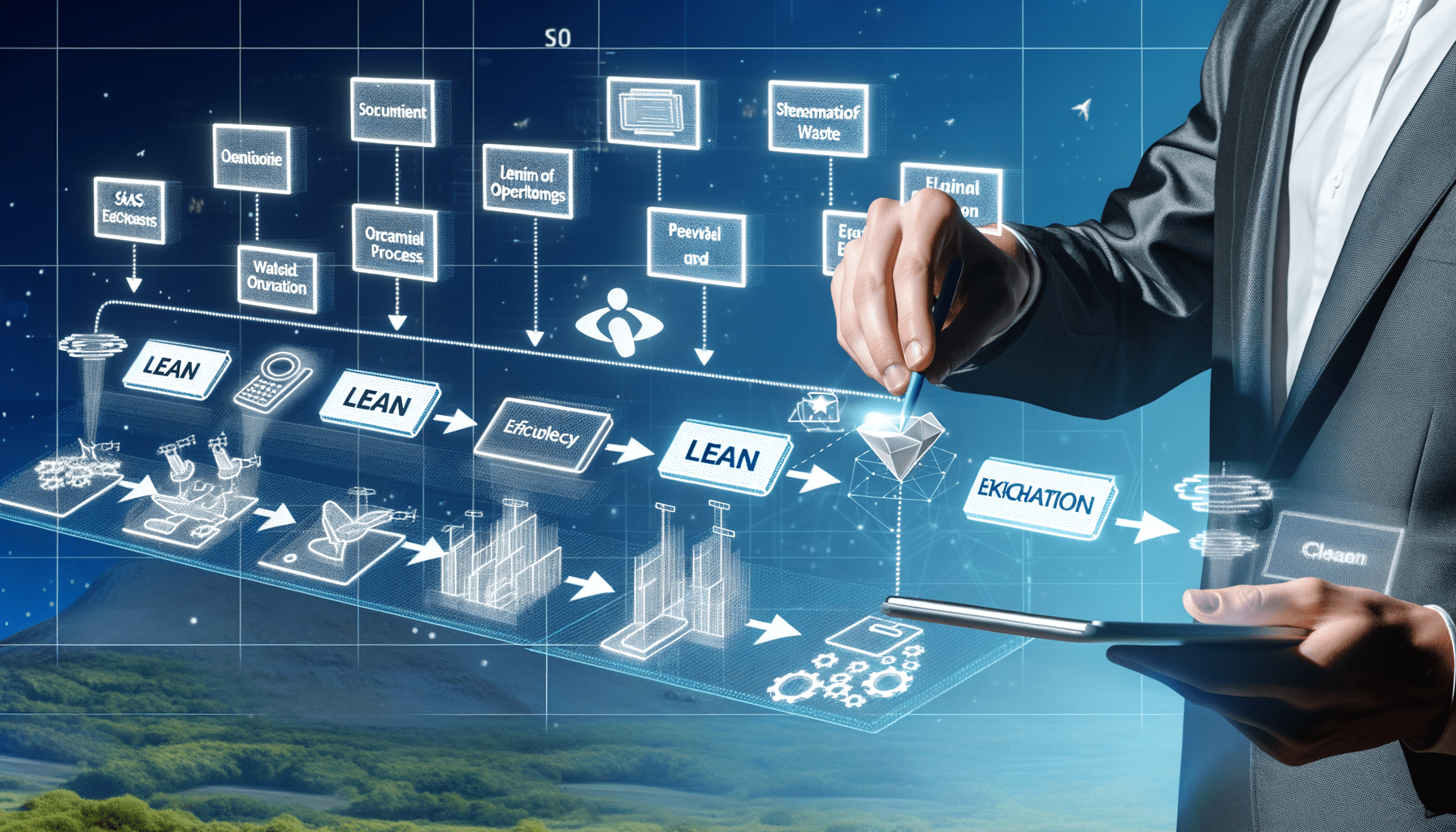Welcome to our comprehensive guide on ‘Streamlined Processes: The Lean Approach’. In this extensive exploration, we will delve deeply into the concept of lean processes, providing you with valuable insights and practical knowledge to help you streamline your operations effectively. Whether you’re a business owner, manager, or simply someone interested in optimizing workflows, this guide is designed to offer you a thorough understanding of lean processes and how they can transform your organization.
Table of Contents
- Introduction to Lean Processes
- History and Evolution of Lean
- Principles of Lean
- Implementing Lean Processes
Introduction to Lean Processes
Lean processes are all about maximizing value while minimizing waste. Originating from the manufacturing industry, particularly from Toyota’s production system, lean principles have now been adopted across various sectors including healthcare, software development, and service industries. The core idea is simple yet powerful: create more value for customers with fewer resources.
Lean processes focus on:
– **Eliminating waste**: Identifying and removing non-value-added activities.
– **Continuous improvement**: Constantly seeking ways to improve processes.
– **Respect for people**: Engaging employees at all levels in problem-solving.
By adopting lean methodologies, organizations can achieve significant improvements in efficiency, quality, and customer satisfaction.
History and Evolution of Lean
The roots of lean thinking can be traced back to the early 20th century with Henry Ford’s assembly line innovations. However, it was Toyota that truly revolutionized the concept with its Toyota Production System (TPS) developed by Taiichi Ohno and Eiji Toyoda. TPS introduced key elements such as Just-In-Time (JIT) production and Jidoka (automation with a human touch).
Over the decades, lean principles have evolved and expanded beyond manufacturing. Today, they are applied in various industries worldwide to enhance productivity and reduce costs.
Principles of Lean
The foundation of lean thinking is built upon five core principles:
1. Value: Understanding what customers value allows organizations to focus their efforts on delivering products or services that meet those needs.
2. Value Stream: Mapping out all steps involved in delivering a product or service helps identify areas where waste occurs.
3. Flow: Ensuring smooth flow through each step minimizes delays caused by bottlenecks or interruptions.
4. Pull: Producing only what is needed when it is needed reduces overproduction.
5. Perfection: Striving for continuous improvement ensures ongoing optimization efforts.
These principles serve as guiding lights for implementing effective lean practices within any organization.
Comparison of Traditional vs Lean Manufacturing Metrics Metric Traditional Manufacturing Lean Manufacturing Lead Time Weeks/Months Days/Hours Inventory Levels High Low Quality Defects Frequent RareIn conclusion,’Streamlined Processes: The Lean Approach’ has provided an extensive overview into the world of lean methodologies—highlighting their historical context ,core principles ,and practical applications . By embracing these strategies ,organizations stand poised not only boost operational efficiency but also foster culture continuous improvement .
We invite you explore our range innovative solutions designed help businesses like yours implement successful initiatives . Visit [Omniaseo’s main product page](https://omniaseo.com/products) today discover how we can support journey towards excellence .
Thank reading !
Introduction to Lean Processes
Lean processes are all about maximizing value while minimizing waste. Originating from the manufacturing industry, particularly from Toyota’s production system, lean principles have now been adopted across various sectors including healthcare, software development, and service industries. The core idea is simple yet powerful: create more value for customers with fewer resources.
Lean processes focus on:
– **Eliminating waste**: Identifying and removing non-value-added activities.
– **Continuous improvement**: Constantly seeking ways to improve processes.
– **Respect for people**: Engaging employees at all levels in problem-solving.
By adopting lean methodologies, organizations can achieve significant improvements in efficiency, quality, and customer satisfaction.
History and Evolution of Lean
The roots of lean thinking can be traced back to the early 20th century with Henry Ford’s assembly line innovations. However, it was Toyota that truly revolutionized the concept with its Toyota Production System (TPS) developed by Taiichi Ohno and Eiji Toyoda. TPS introduced key elements such as Just-In-Time (JIT) production and Jidoka (automation with a human touch).
Over the decades, lean principles have evolved and expanded beyond manufacturing. Today, they are applied in various industries worldwide to enhance productivity and reduce costs.
Principles of Lean
The foundation of lean thinking is built upon five core principles:
1. Value: Understanding what customers value allows organizations to focus their efforts on delivering products or services that meet those needs.
2. Value Stream: Mapping out all steps involved in delivering a product or service helps identify areas where waste occurs.
3. Flow: Ensuring smooth flow through each step minimizes delays caused by bottlenecks or interruptions.
4. Pull: Producing only what is needed when it is needed reduces overproduction.
5. Perfection: Striving for continuous improvement ensures ongoing optimization efforts.
These principles serve as guiding lights for implementing effective lean practices within any organization.
| Comparison of Traditional vs Lean Manufacturing Metrics | ||
|---|---|---|
| Metric | Traditional Manufacturing | Lean Manufacturing |
| Lead Time | Weeks/Months | Days/Hours |
| Inventory Levels | High | Low |
| Quality Defects | Frequent | Rare
In conclusion,’Streamlined Processes: The Lean Approach’ has provided an extensive overview into the world of lean methodologies—highlighting their historical context ,core principles ,and practical applications . By embracing these strategies ,organizations stand poised not only boost operational efficiency but also foster culture continuous improvement . We invite you explore our range innovative solutions designed help businesses like yours implement successful initiatives . Visit [Omniaseo’s main product page](https://omniaseo.com/products) today discover how we can support journey towards excellence . Thank reading ! |



Leave a Reply